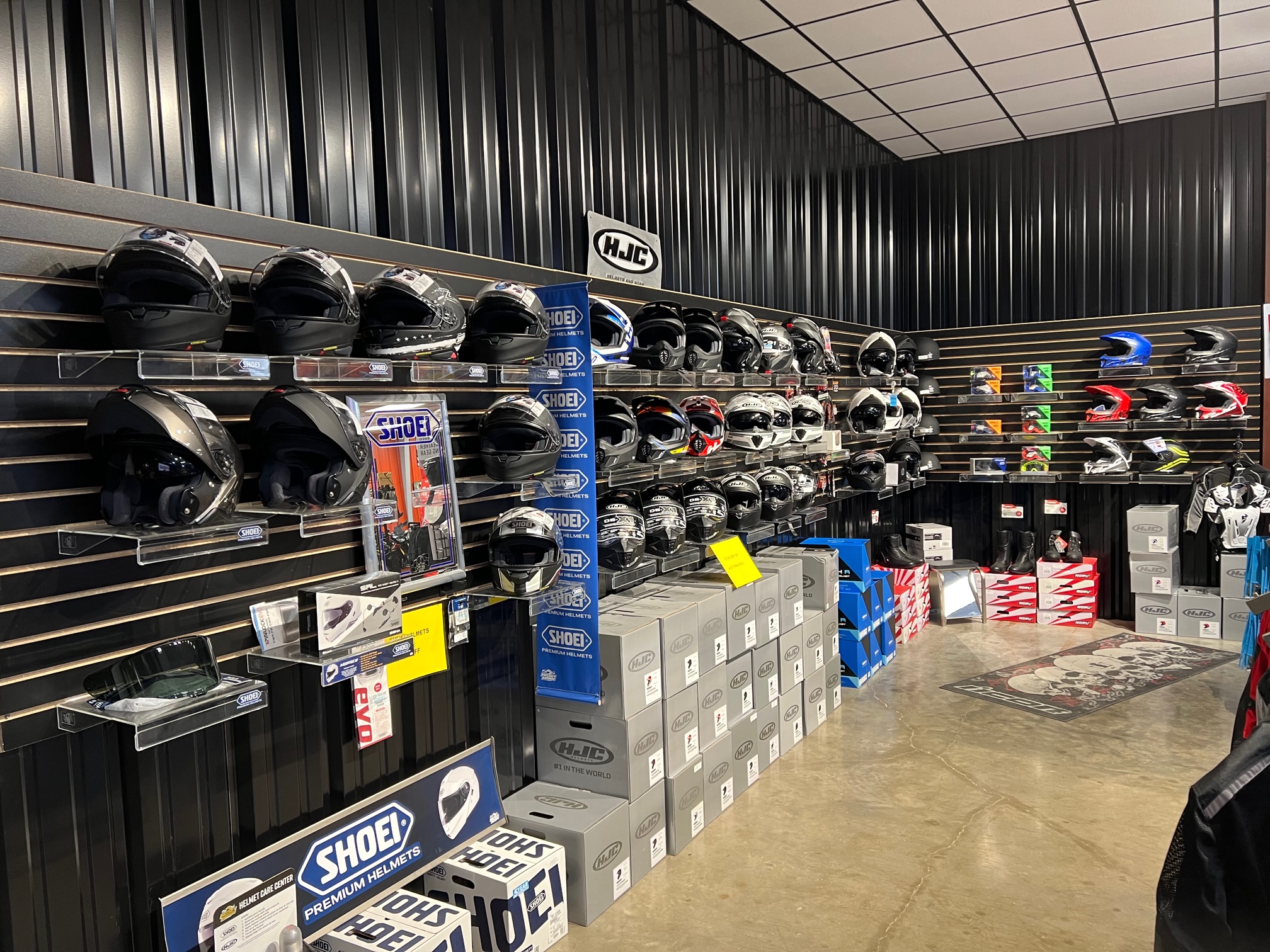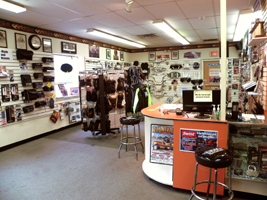Discover High Quality Moto Parts NZ for All Your Motorcycle Needs
Discover High Quality Moto Parts NZ for All Your Motorcycle Needs
Blog Article
Comprehending the Crucial Parts of a Motorbike: A Comprehensive Overview for Lovers
For motorbike lovers seeking to boost their riding experience and guarantee their bikes run efficiently, understanding the essential components of a bike is vital. Each aspect, from the engine's detailed functions to the vital duty of the braking systems, not only influences efficiency however also safety and convenience. This overview will walk through the essential components that every motorcyclist must recognize with, enabling informed choices in both upkeep and prospective upgrades. As we start this expedition, one must ask: exactly how does each part engage to develop the smooth trip every lover seeks?
Engine Elements

The camshaft plays a crucial role in regulating the timing of the engine's shutoffs, ensuring the accurate opening and closing essential for efficient gas and air intake, as well as exhaust expulsion. This timing is essential to keeping ideal engine efficiency and efficiency. Additionally, the carburetor or fuel injection system, depending upon the bike version, is responsible for blending air with gas in the right proportion for burning.
The cooling system, either air or liquid-based, works to keep the engine's temperature level within functional limitations, stopping overheating and guaranteeing durability - motocross gear. Each part, diligently developed and incorporated, adds to the seamless procedure of the engine, defining the motorcycle's power outcome and general efficiency
Transmission System
Indispensable to the bike's functionality, the transmission system makes certain reliable power transfer from the engine to the wheels. This system consists of a number of vital elements, including the clutch, gearbox, and final drive, each playing an important role in converting the engine's power into movement. The clutch, typically run by a hand lever, offers to involve and disengage the engine from the transmission, permitting smooth gear modifications and controlled velocity.
The gearbox, often described as the transmission correct, includes a set of equipments that bikers can by hand change through to readjust the bike's rate and torque output. These equipments are set up in a sequence that allows the motorcycle to accelerate efficiently and maintain optimal engine performance across numerous speeds. Most motorcycles utilize a consecutive gearbox, calling for the rider to change gears in a fixed order.
Braking Mechanisms
While understanding the transmission system is vital to taking advantage of a motorbike's power, equally vital is the capacity to control and quit that power successfully, which is where braking mechanisms enter into play. Brakes are crucial for safety and security and performance, supplying the cyclist with the required control to navigate numerous terrains and problems. Generally, motorcycles include two kinds of braking systems: disc brakes and drum brakes.
Disc brakes are more widespread in modern-day motorcycles due to their remarkable performance. They include a brake disc, caliper, and pads. When turned on, the caliper squeezes the brake pads against the spinning disc, transforming kinetic energy into warm, thereby reducing the wheel. This system offers better warm dissipation, consistent efficiency, and enhanced stopping power, especially in damp conditions.
On the other hand, drum brakes, though less common, are still found in some YOURURL.com motorbikes. They work by pushing brake footwear against the inner surface area of a drum affixed to the wheel. While generally less reliable in warmth dissipation and quiting power, drum brakes are easier and a lot more cost-efficient.
Understanding these braking systems' nuances enables motorcyclists to preserve their motorbikes effectively and appreciate the design that makes sure secure and efficient quiting.
Suspension and Steering
Suspension and steering systems are essential elements motorcycle handlebars that significantly influence a motorcycle's handling and adventure comfort. The shock absorber, containing forks at the front and shock absorbers at the rear, soaks up roadway irregularities, enhancing stability and control. Front forks, upside down or typically telescopic, compress and rebound to reduce impacts, while back shock absorbers keep tire contact with the roadway, critical for grip and security.
Steering, focused around the handlebars, attaches the biker to the motorcycle's directional control. The guiding head bearings guarantee smooth operation, allowing precise ability to move. Correct positioning and upkeep of these bearings are essential for predictable guiding action and lowering cyclist fatigue.
The suspension's adjustability is an additional essential aspect; preload, damping, and rebound settings enable modification to fit various riding conditions and designs. This flexibility is vital for maximizing efficiency, whether browsing metropolitan streets or tackling sturdy trails. Developments like digital suspension systems provide real-time modifications, boosting ride top quality across diverse terrains.

Electrical Solutions
After guaranteeing a smooth and controlled ride with effective suspension and steering systems, attention turns to the electric systems, an essential facet of modern motorbikes. These systems play a crucial duty not only in beginning the engine however additionally in powering different parts that boost the functionality and safety and security of the motorcycle.
At the heart of a motorbike's electric system is the battery, which shops electric energy essential for starting the engine and powering complementary systems - motocross parts nz. The alternator or generator, combined with the rectifier-regulator, ensures the battery remains billed while the bike functions, converting power into electrical power and keeping voltage degrees
The ignition system, another crucial element, is accountable for sparking the air-fuel mixture in the engine's cyndrical tubes. Modern bikes often use an electronic ignition system, providing higher performance and reliability compared to conventional systems.
Lights systems, including headlights, tail lights, and indicators, are additionally vital, making sure exposure and safety for the rider. Added digital parts such as sensing units, control systems, and presents add to advanced features like fuel injection management, anti-lock braking systems (ABDOMINAL), and digital control panels, better boosting the riding experience.
Conclusion
A detailed comprehension of a motorcycle's vital elements, including the engine, transmission system, braking devices, suspension, guiding, and electrical systems, is indispensable for lovers intending to enhance performance, security, and convenience. Proficiency of these elements enables educated decisions concerning maintenance and upgrades, ultimately enhancing the riding experience. By incorporating this knowledge, bikers can guarantee their motorcycles run at peak effectiveness and integrity, therefore taking full advantage of both satisfaction and longevity of their automobiles.
For bike enthusiasts looking to elevate their pop over here riding experience and guarantee their bikes run smoothly, comprehending the essential components of a motorcycle is paramount.Integral to the bike's capability, the transmission system guarantees reliable power transfer from the engine to the wheels.While comprehending the transmission system is key to taking advantage of a bike's power, similarly essential is the ability to control and stop that power efficiently, which is where stopping mechanisms come right into play. Typically, motorcycles feature two kinds of braking systems: disc brakes and drum brakes.
An extensive understanding of a bike's crucial parts, including the engine, transmission system, stopping devices, suspension, guiding, and electric systems, is vital for fanatics intending to enhance security, convenience, and performance.
Report this page